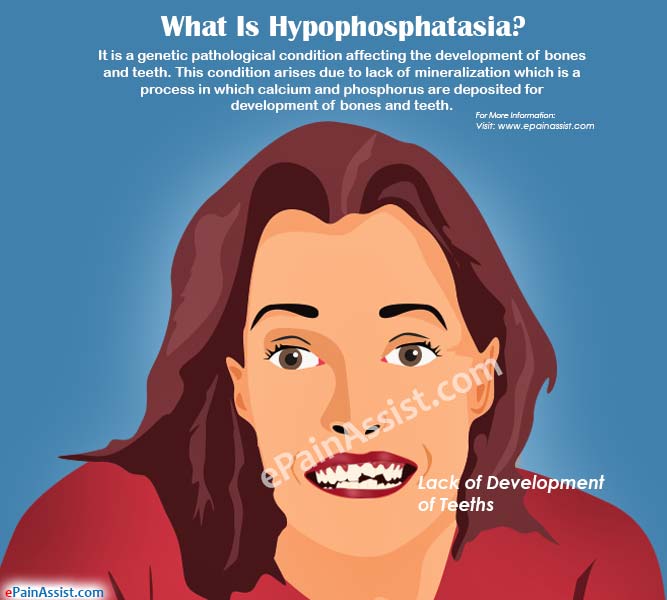What Is Hypophosphatasia?
Hypophosphatasia is a genetic pathological condition affecting the development of bones and teeth. This condition arises due to lack of mineralization which is a process in which calcium and phosphorus are deposited for development of bones and teeth. Mineralization is extremely crucial for adequate development of bones and teeth so that the bones and teeth can withstand the daily routines like chewing and grinding. The symptoms of Hypophosphatasia are greatly varied and can be observed right at birth to adulthood. The severest form of Hypophosphatasia tends to occur at birth and early infancy. Hypophosphatasia makes the bones weak and soft resulting in numerous skeletal abnormalities. It is pretty similar to another disease condition called rickets. Individuals affected with Hypophosphatasia are born with short limbs, abnormally shaped chest, and extremely soft skull bones.

What Are The Causes Of Hypophosphatasia?
Hypophosphatasia is caused as a result of a molecular defect in gene encoding TNSALP. TNSALP is an ectoenzyme present in the outer surface of osteoblast and chondrocyte cell membranes. The function of TNSALP is to hydrolyze inorganic pyrophosphate and pyridoxal 5′-phosphate, which is a major form of vitamin B6. When this ectoenzyme TNSALP is low, inorganic pyrophosphate gets accumulated extracellularly and inhibits formation of hydroxyapatite resulting in medical condition called rickets in infants and children and osteomalacia in adults.
What Are The Symptoms Of Hypophosphatasia?
The signs and symptoms of Hypophosphatasia are extremely varied and can be observed at birth or in adulthood but the most severe form of Hypophosphatasia occurs at birth and early infancy. Hypophosphatasia tends to make the bones weak and soft similar to a medical condition found in children called rickets. Infants with Hypophosphatasia are born with relatively short limbs, abnormally shaped chest, and soft skull bones along with extremely poor feeding, inability to gain weight, respiratory difficulties, and presence of hypercalcemia, which causes frequent vomiting episodes and renal problems. In some cases, these symptoms can be potentially serious. Hypophosphatasia appearing in adulthood are much milder than those in infancy. Premature loss of milk teeth is one of the first signs of Hypophosphatasia in children. Affected children tend to have a short stature along with bowing of legs. They also will have enlarged wrists and ankle joints. In adult forms of Hypophosphatasia, there will be presence of osteomalacia. There will also be frequent fractures of bones in the feet with chronic pain in the foot.
How Is Hypophosphatasia Diagnosed?
One of the first symptoms of Hypophosphatasia is the premature fall of milk teeth in children, which can be a telling finding for diagnosis of Hypophosphatasia.
Laboratory Testing: When a laboratory testing is conducted, there will be increased level of pyridoxal 5′-phosphate plasma. Additionally, there will be increased levels of phosphoethanolamine in the urine.
Radiographic Studies: X-rays are quite conclusive in the diagnosis of Hypophosphatasia, especially in infants and reveal the characteristic abnormalities noted in Hypophosphatasia. Some of the radiologic evidence of skeletal defects includes hypomineralization, incomplete vertebral ossification, and occasionally presence of bony spurs on the ulna and fibula.
Genetic Testing: All the subtypes of Hypophosphatasia have been linked to genetic mutations in gene TNSALP, which can be found on detailed genetic testing and can confirm the presence of Hypophosphatasia.
What Are Treatments For Hypophosphatasia?
As of now, there is no cure for Hypophosphatasia and treatment is aimed at decreasing morbidity associated with Hypophosphatasia. Routine examination of children to look for increased intracranial pressure is essential. Orthopedic care is also required in adults to take care of the fractures. Routine visit to a dentist is also essential. Some treatments which have been tried for treatment of Hypophosphatasia, but with not so positive results are zinc, magnesium, cortisone, and plasma.
